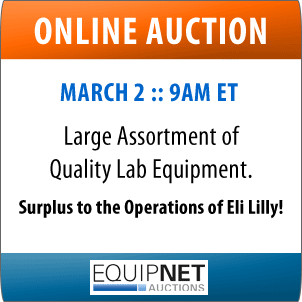|
May 31
2010
|
No. 10: COMPLIANCE: PI finds number of IACUC inspections excessivePosted by: PIA in Tagged in: Untagged
|
|
Sign Up to receive free weekly articles like these
REGULATORY COMPLIANCE
PI finds number of IACUC inspections excessive
Reader Question: Our IACUC has a new chair, and it seems they are inspecting me every month. This seems really excessive, especially since I haven't been cited on anything yet. Is this a new regulation? Is there anything I can do to reduce the frequency?
Expert Comments:
Specific policies [PHS Policy (IV, B, 1; IV, B, 2) and AWAR (§2:31,c,1; §2.31,c,2)] require that institutional animal care and use committees (IACUCs) inspect animal facilities at least once every six months. An animal facility is either an animal housing area (animals housed more than 12 hours) or an animal procedure room. To my knowledge, most IACUCs do not go beyond this required number of facility inspections — especially because most members have duties outside their IACUC roles.
An inspection every month does seem excessive. However, without knowing the specifics of your situation, I can think of a number of reasons why there could be an apparent increase in inspections by a new IACUC chair (IC). For example:
• The IC might be establishing a new inspection schedule, which could initially result in some inspections closer than six months apart.
• The coordinator for inspections may not have all of your housing and procedure areas grouped in one inspection. (If this is the case, please notify the appropriate personnel and see if this can be corrected, not only for your benefit but for the IACUC’s as well.)
• How close is your institution to reaccreditation by the Association for Assessment and Accreditation of Laboratory Animal Care International (AAALAC)? Reaccreditation happens every three years and requires site visits. AAALAC has its own inspectors, but they usually are accompanied by IACUC inspectors. If it is close to accreditation time, there may be more visits to ensure that facilities are meeting recommendations of the Guide for the Care and Use of Laboratory Animals.
• Are you certain that all the inspections are in fact from IACUC members? Your institution’s attending veterinarian (AV) or his or her animal-care staff may make monthly rounds of facilities. While this is part of an institution’s animal-care program, it is not directly affiliated with IACUC.
• Other institutional programs (Occupational Health and Safety, Laboratory Safety, etc.) may involve inspections on a regular basis. The U.S. Department of Agriculture (USDA) also is required to make site visits to institutions receiving funding for USDA covered species.
• Recently, many IACUCs have developed strong written Post Approval Monitoring programs (PAMs). These are intended to ensure that PIs' research programs continue to be in compliance with their accepted protocols. Because many PAM programs are relatively new, they will initially involve more time for inspectors.
The IACUC is meant to represent the interests, not only of covered animal species but also those of the community, institution, and the PIs. I would suggest that you call your new IC and bring to his or her attention the number of inspections you've been getting. IACUC inspections were never meant to be burdensome to PIs or to IACUC members (many of whom are themselves PIs).
Perhaps there is a way to combine some of the inspections (e.g., semi-annual and PAM). I know of some IACUCs that have worked with other institutional programs so that inspections could be scheduled at the same time to reduce redundancies and decrease burdens on the PI.
I'm sure your new IC would welcome your feedback and useful suggestions to streamline the inspection process.
Comments by Debbie Cherney, PhD, MA, associate professor in the Department of Animal Science and seven-year IACUC member, Cornell University.
written by JAIME, May 26, 2010
written by David Harrison, June 04, 2010
They are good if they recognize the value of your research and work with you and your team to maximize your research potential while minimizing the stress on the research animals - and, of course, making sure your institution does not get in trouble. Obviously stress harms your experiments as well as the animals, so it must be minimized.
They are bad, if they see you as a potential criminal and themselves as the police. In this case, they are no help, but just try to find areas to criticize, using legalistic tactics with no appreciation of the vital importance of animal research.
In the latter case, you should discuss their misbehavior with other faculty using animals and being policed, and work as a group to have your high level administrators replace the bad IACUC leadership with good.
If your high level administrators fail to support you in this, it is time to consider a different institution - and check the attitude of their IACUC before applying.
written by David, June 07, 2010
written by TAD, July 16, 2010
written by TAD, July 16, 2010
I am impressed with the comments of each of the contributors to this debate. They compise insightfull and legitimate considerations. In regards to animal rights/laboratory testing I am somewhat in the middle ground, and trying to come to grips with the issue. I am unequivocily against any form of cruelty to any life form that can and does feel pain, fear, anxiety or unusual discomfort due to expermients done on their living forms, or in the maner they are housed. A philosophical argument over animal rights serves little purpose in solving the more urgent question of pain and suffering inflicted on laboratory animals. To this end both sides would be better served to work toward insuring lab animals be treated humanely. This would include doing no experiements without the use of anestheia, post operative pain killers, adequate food and water, living space, excercise, etc. The fact that labs are infrequently and unevenly "inspected" does not guarantee these humane actions. Our medical educational system favors those with a strong stomach and ability to witness and participate in suffering in its various forms. Our grant system favors the creative mind who can justify the new and ever more bazar experiement. The fact is a lab animal has no hope or chance of survival. It is destined to a life of suffering. It is incumbant on the reasearchers to improve their lot at every opportunity and in any maner possible. Being a member of the humane species mandates nothing less.



